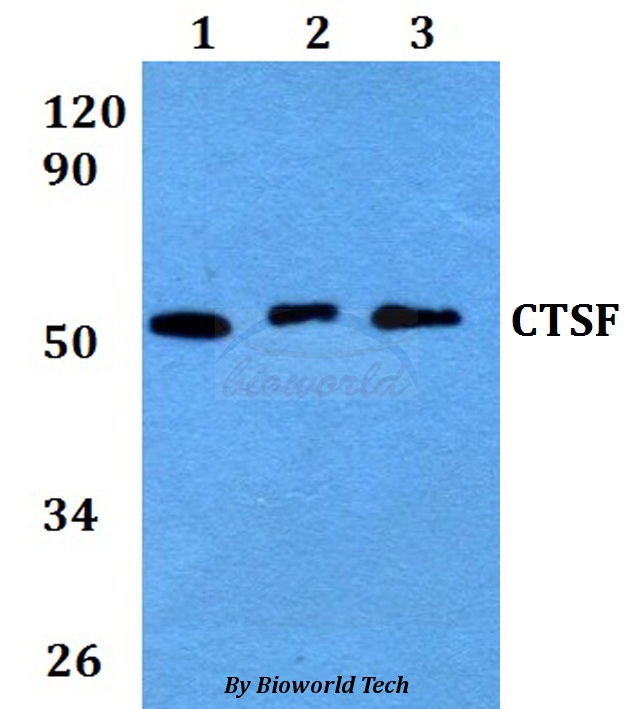
WB analysis of human ovary lysate using GTX89526 Cathepsin F antibody, C-term. Dilution : 0.3microg/ml Loading : 35microg protein in RIPA buffer
Cathepsin F antibody, C-term
GTX89526
ApplicationsWestern Blot
Product group Antibodies
TargetCTSF
Overview
- SupplierGeneTex
- Product NameCathepsin F antibody, C-term
- Delivery Days Customer9
- Application Supplier NoteWB: 0.3-1microg/ml. *Optimal dilutions/concentrations should be determined by the researcher.Not tested in other applications.
- ApplicationsWestern Blot
- CertificationResearch Use Only
- ClonalityPolyclonal
- Concentration0.50 mg/ml
- ConjugateUnconjugated
- Gene ID8722
- Target nameCTSF
- Target descriptioncathepsin F
- Target synonymsCATSF, CLN13, cathepsin F
- HostGoat
- IsotypeIgG
- Protein IDQ9UBX1
- Protein NameCathepsin F
- Scientific DescriptionCathepsins are papain family cysteine proteinases that represent a major component of the lysosomal proteolytic system. Cathepsins generally contain a signal sequence, followed by a propeptide and then a catalytically active mature region. The very long (251 amino acid residues) proregion of the cathepsin F precursor contains a C-terminal domain similar to the pro-segment of cathepsin L-like enzymes, a 50-residue flexible linker peptide, and an N-terminal domain predicted to adopt a cystatin-like fold. The cathepsin F proregion is unique within the papain family cysteine proteases in that it contains this additional N-terminal segment predicted to share structural similarities with cysteine protease inhibitors of the cystatin superfamily. This cystatin-like domain contains some of the elements known to be important for inhibitory activity. CTSF encodes a predicted protein of 484 amino acids which contains a 19 residue signal peptide. Cathepsin F contains five potential N-glycosylation sites, and it may be targeted to the endosomal/lysosomal compartment via the mannose 6-phosphate receptor pathway. The cathepsin F gene is ubiquitously expressed, and it maps to chromosome 11q13, close to the gene encoding cathepsin W. [provided by RefSeq, Jul 2008]
- Storage Instruction-20°C or -80°C,2°C to 8°C
- UNSPSC12352203



